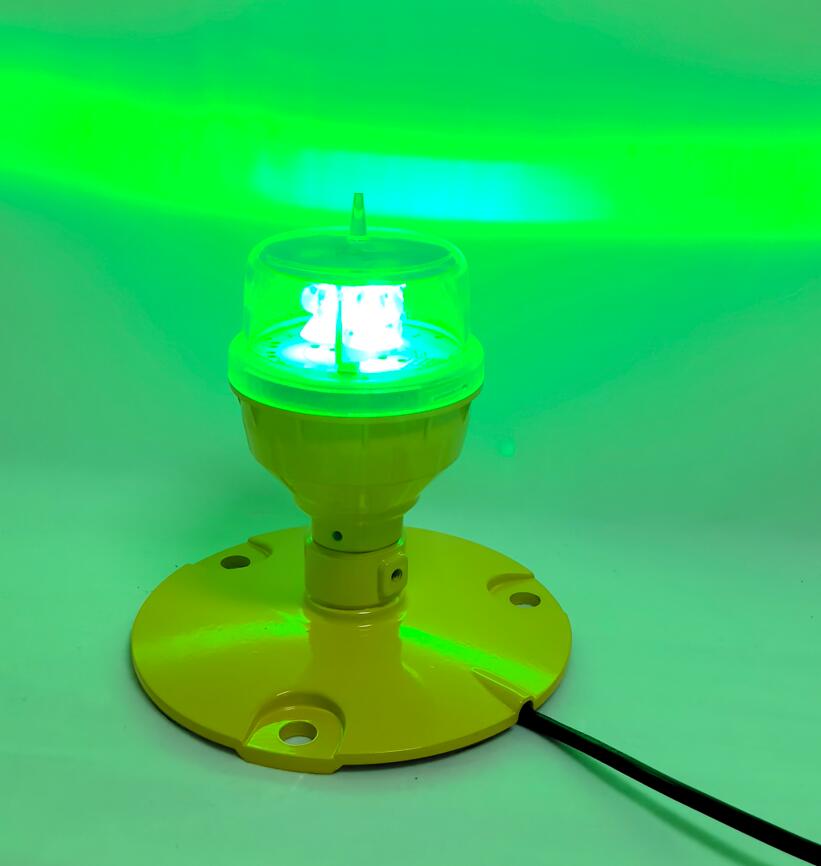LED Heliport Perimeter Light: Illuminating the Future of Helicopter Safety
The LED heliport perimeter light has emerged as a game-changing innovation in aviation lighting, revolutionizing the way helicopter landing zones are illuminated. As helicopters play an increasingly vital role in emergency medical services, urban air mobility, and remote area access, the need for reliable, energy-efficient, and durable lighting solutions has never been greater. This article explores the significance of LED heliport perimeter lights, their technological advantages, and their impact on enhancing safety and operational efficiency in helicopter operations.
The Critical Role of LED Heliport Perimeter Lights
Heliport perimeter lights are essential for defining the boundaries of a helipad, providing pilots with a clear visual reference during takeoff, landing, and maneuvering. In low-visibility conditions, such as nighttime, fog, or heavy rain, these lights become indispensable for ensuring safe operations. LED heliport perimeter lights, in particular, have set a new standard for performance, offering superior brightness, energy efficiency, and longevity compared to traditional lighting technologies.
By clearly marking the edges of the helipad, LED heliport perimeter lights help pilots maintain proper alignment and avoid drifting into unsafe areas. They also serve as a warning system for nearby obstacles, ensuring that helicopters can operate safely in confined or complex environments. This dual function makes them a cornerstone of modern heliport lighting systems.
Advantages of LED Technology in Heliport Perimeter Lights
The adoption of LED technology in heliport perimeter lights has brought numerous benefits, transforming the way heliports are illuminated. Below are some of the key advantages of LED heliport perimeter lights:

Superior Brightness and Visibility: LEDs produce a crisp, intense light that is easily visible even in adverse weather conditions. This ensures that pilots can clearly identify the helipad boundaries, reducing the risk of accidents.
Energy Efficiency: LED heliport perimeter lights consume significantly less energy than traditional incandescent or halogen bulbs. This not only lowers operational costs but also reduces the environmental impact of heliport operations.
Long Lifespan: LEDs have a much longer lifespan compared to conventional lighting solutions, often lasting tens of thousands of hours. This reduces the frequency of replacements and maintenance, making them a cost-effective choice for heliport operators.
| led heliport perimeter light |
| led heliport perimeter lights |
Durability and Reliability: LED heliport perimeter lights are designed to withstand harsh environmental conditions, including extreme temperatures, heavy rain, and vibrations. Their robust construction ensures reliable performance in demanding aviation environments.
Customizable Lighting Options: LEDs offer flexibility in terms of color, intensity, and beam patterns. This allows heliport operators to tailor the lighting system to meet specific operational requirements, such as adjusting brightness based on ambient light conditions.
Enhancing Safety and Operational Efficiency
The primary purpose of LED heliport perimeter lights is to enhance safety. By providing clear and consistent illumination, these lights help pilots navigate and land with precision, even in challenging conditions. This is particularly critical for emergency medical services (EMS), where timely and accurate landings can save lives.
In addition to safety, LED heliport perimeter lights contribute to operational efficiency. Helicopters can operate more reliably in low-visibility conditions, reducing delays and improving service availability. This is especially important for urban air mobility (UAM) initiatives, where frequent and timely operations are essential for success.
Environmental and Economic Benefits
The shift to LED technology in heliport perimeter lights has significant environmental and economic benefits. LEDs consume less energy, reducing the carbon footprint of heliport operations and aligning with global sustainability goals. Additionally, their long lifespan and low maintenance requirements translate into cost savings for heliport operators, making them a financially viable investment.
Solar-powered LED heliport perimeter lights have further enhanced these benefits, particularly in remote or off-grid locations. These systems use solar panels to charge batteries during the day, providing reliable illumination at night without relying on external power sources. This innovation is especially valuable for emergency heliports in disaster-prone areas or rural regions.
Future Trends in LED Heliport Perimeter Lighting
The future of LED heliport perimeter lights lies in further integration with smart technologies and automation. For instance, predictive maintenance systems could use data analytics to identify potential issues before they lead to failures, ensuring uninterrupted operation. Additionally, the integration of LED perimeter lights with augmented reality (AR) displays in helicopter cockpits could provide pilots with enhanced situational awareness, further improving safety.
Another emerging trend is the use of adaptive lighting systems that respond to real-time conditions. For example, LED heliport perimeter lights could change color or intensity to alert pilots of changing weather conditions or nearby obstacles, providing an additional layer of safety.
LED heliport perimeter lights have redefined the standards of helicopter landing zone illumination, offering unparalleled brightness, energy efficiency, and durability. As the aviation industry continues to evolve, these lights will remain a critical component of heliport infrastructure, supporting the growing demand for helicopter services while prioritizing safety and sustainability. By embracing the advancements in LED technology, heliport operators can ensure a safer, more efficient, and environmentally friendly future for vertical aviation. The LED heliport perimeter light is not just a lighting solution—it is a beacon of progress in modern aviation.
